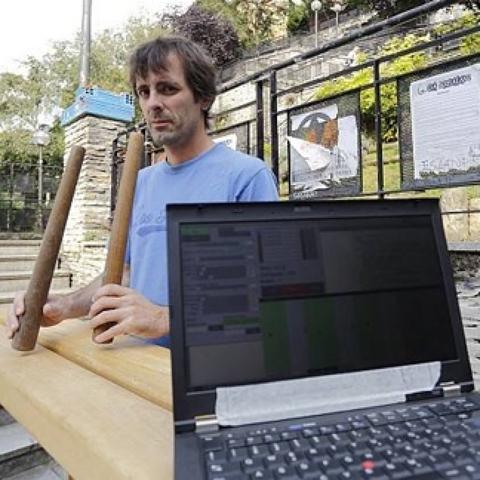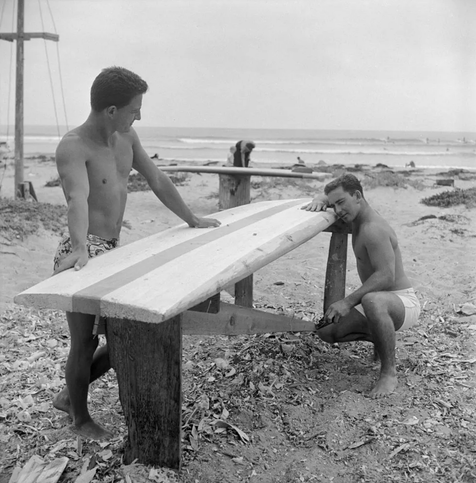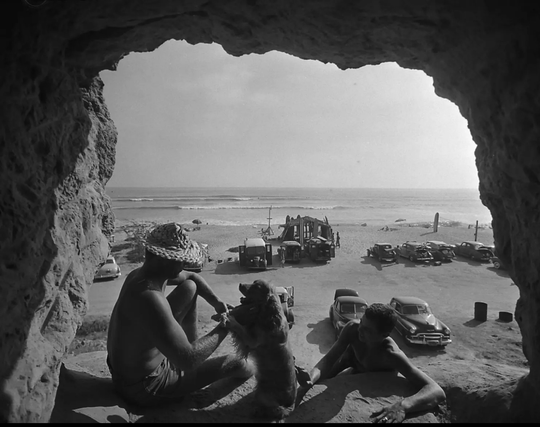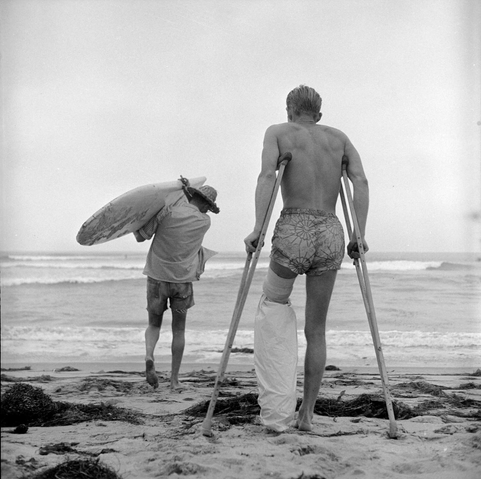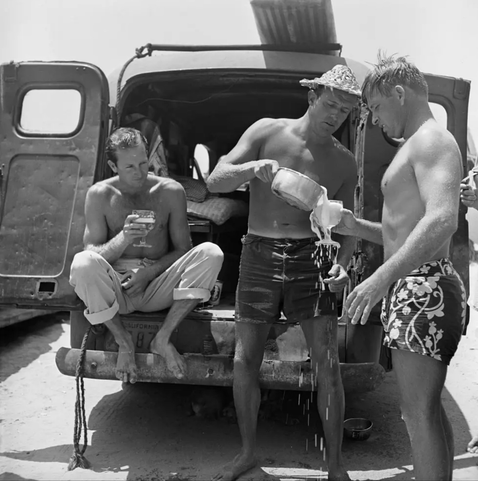SAN ONOFRE: SAN ONOFRE, 10-XXVIII Mikel Vega interviú
#sanonofre
SAN ONOFRE: SAN ONOFRE, 9-XXVIII Picastro interviú
SAN ONOFRE: SAN ONOFRE, 8-XXVIII Txema Agiriano (MEM 2025) interviú
SAN ONOFRE: SAN ONOFRE, 7-XXVIII Sinks interviú
SAN ONOFRE: SAN ONOFRE, 6-XXVIII Retrofuturismo La Fiesta No Es Para Feos
SAN ONOFRE: SAN ONOFRE, 5-XXVIII Enrike Hurtado interviú
SAN ONOFRE: SAN ONOFRE, 4-XXVIII Julián Mayorga interviú
SAN ONOFRE: SAN ONOFRE, 3-XXVIII Andrés Noarbe (Rotor) interviú
Yep, Surfer.com:
“San Onofre’s #nuclear waste may be one step closer to being relocated, but at least one of the storage canisters containing spent fuel rods appears to be damaged.”
#SanOnofre #NuclearPower #SOCAL
https://www.surfer.com/news/more-alarming-news-from-surfings-favorite-nuclear-waste-facility
CA #wildfires: a warning to #NRC on #ClimateChange
January 16, 2025
"The NRC’s actions to address the risks from natural hazards do not fully consider potential climate change effects on severe nuclear accident risks. 'For example, NRC primarily uses historical data in its licensing and oversight processes rather than climate projections data,' the GAO report said.
"Beyond Nuclear has uncovered similar findings during our challenges to the NRC’s extreme relicensing process for extending reactor operating licenses, now out to the extreme of 60 to 80 years and talk of 100 years. We found that the agency’s staff believes and stubbornly insists that an #environmental review for climate change impacts (#SeaLevelRise, increasingly severe #hurricanes, extreme #flooding, etc.) on reactor safety and reliability is 'out of scope' for the license extensions hearing process.
"The GAO report points out to the NRC that wildfires, specifically, can dangerously impact US nuclear power stations operations and public safety with potential consequences that extend far beyond the initiating natural disaster. These consequences can include loss of life, large scale and indefinite population dislocation and uninsurable economic damage from the radiological
consequences:
" 'Wildfire. According to the NCA (National Climate Assessment), increased heat and drought contribute to increases in wildfire frequency, and climate change has contributed to unprecedented wildfire events in the Southwest. The NCA projects increased heatwaves, drought risk, and more frequent and larger wildfires. Wildfires pose several risks to nuclear power plants, including increasing the potential for onsite fires that could damage plant infrastructure, damaging transmission lines that deliver electricity to plants, and causing a loss of power that could require plants to shut down. Wildfires and the smoke they produce could also hinder or prevent nuclear power plant personnel and supplies from getting to a plant.'
"Loss of offsite electrical power (#LOOP) to nuclear power stations is a leading contributor to increasing the risk of a severe nuclear power accident. The availability of alternating current (AC) power is essential for safe operation and accident recovery at commercial nuclear power plants. Offsite fires destroying electrical power transmission lines to commercial reactors therefore increase the probability and severity of nuclear accidents.
"For US nuclear power plants, 100% of the electrical power supply to all reactor safety systems is initially provided through the offsite power grid. If the offsite electrical grid is disturbed or destroyed, the reactors are designed to automatically shut down or 'SCRAM'. Onsite emergency backup power generators are then expected to automatically or manually start up to provide power to designated high priority reactor safety systems needed to safely shut the reactors down and provide continuous reactor cooling, pressure monitoring, but to a diminished number of the reactors’ credited safety systems. Reliable offsite power is therefore a key factor to minimizing the probability of severe nuclear accidents.
"The GAO identifies a number of US nuclear power plant sites that are vulnerable to the possible outbreak of wildfires where they are located. 'According to our analysis of U.S. Forest Service and NRC data, about 20 percent of nuclear power plants (16 of 75) are located in areas with a high or very high potential for wildfire,' the GAO report states. 'More specifically, more than
one-third of nuclear power plants in the South (nine of 25) and West (three of eight) are located in areas with a high or very high potential for wildfire.' The GAO goes on to identify 'Of the 16 plants with high or very high potential for wildfire, 12 are operating and four are shutdown.'
"To analyze exposure to the wildfire hazard potential, the GAO used 2023 data from the U.S. Forest Service’s Wildfire Hazard Potential Map. 'High/very high' refers to plants in areas with high or very high wildfire hazard potential. Those #NuclearPower stations described by GAO as 'high / very high' exposure to wildfires and their locations are excerpted from GAO Appendix III: Nuclear Power Plant Exposure to Selected Natural Hazards.
Table 1: Potential High Exposure to “Wildfires” at Operating Nuclear Power Plants
–AZ / #SAFER, one of two mobile nuclear emergency equipment supply units in the nation, “HIGH / VERY HIGH”
–CA / #DiabloCanyon Units 1 & 2 nuclear power station, “HIGH / VERY HIGH”
–FL / #TurkeyPoint Units 3 & 4 nuclear power station, “HIGH / VERY HIGH”
–GA / #EdwinI. Hatch Units 1 & 2 nuclear power station, “HIGH / VERY HIGH”
–GA / $Vogtle Units Units 1, 2, 3 & 4, nuclear power station, “HIGH / VERY HIGH”
–NC / #BrunswickNPP Units 1 & 2 nuclear power station, “HIGH / VERY HIGH”
–NC / #McGuire Units 1 & 2 nuclear power station, “HIGH / VERY HIGH”
–NC / #ShearonHarris Units 1 & 2 nuclear power station, “HIGH /VERY HIGH”
–NB / #Cooper nuclear power station, “HIGH / VERY HIGH”
–SC / #Catawba Units 1 & 2 nuclear power station, “HIGH / VERY HIGH”
–SC / #HBRobinson Units 1 & 2 nuclear power station, “HIGH / VERY HIGH”
–WA / #ColumbiaNuclearPower station, “HIGH / VERY HIGH”
Table 2: Potential High Exposure to “Wildfires” at Shutdown Nuclear Power Plants
–CA / #SanOnofre Units 1 & 2, “HIGH / VERY HIGH”
–FL / #CrystalRiver, “HIGH / VERY HIGH”
–NJ / #OysterCreek, “HIGH / VERY HIGH”
–NY / #IndianPoint Units 1, 2 & 3, “HIGH / VERY HIGH”
"Wildfires can transport radioactive contamination from nuclear facilities
"A historical review of wildfires that occur around nuclear facilities (research, military and commercial power) identifies that these events are also a very effective transport mechanism of radioactivity previously generated at these sites and subsequently released into the environment by accident, spills and leaks, and careless dumping. The radioactivity is resuspended by wildfires that occur years, even decades later. The fires carry the radioactivity on smoke particles downwind, thus expanding the zone of contamination further and further with each succeeding fire. The dispersed radionuclides can have very long half-lives meaning they remain biologically hazardous in the environment for decades, centuries and longer."
cc: @Cyclist @stfn @collectifission
Read more:
https://beyondnuclear.org/ca-wildfires-are-a-warning-to-nrc-on-climate-change/
#NoNukes #NoNukesForAI #RethinkNotRestart #NuclearPlants #NuclearPowerPlants #ClimateCrisis #Radiation
#Wildfire risks high at #US #NuclearPlants
Posted on January 19, 2025 by beyondnuclearinternational
The GAO identifies a number of US nuclear power plant sites that are vulnerable to the possible outbreak of #wildfires where they are located.
"'According to our analysis of U.S. Forest Service and NRC data, about 20 percent of nuclear power plants (16 of 75) are located in areas with a high or very high potential for wildfire,' the GAO report states. 'More specifically, more than one-third of nuclear power plants in the South (nine of 25) and West (three of eight) are located in areas with a high or very high potential for wildfire.' The GAO goes on to identify 'Of the 16 plants with high or very high potential for wildfire, 12 are operating and four are shut down.'
"To analyze exposure to the wildfire hazard potential, the GAO used 2023 data from the U.S. Forest Service’s Wildfire Hazard Potential Map. 'High / very high refers to plants in areas with high or very high wildfire hazard potential. Those nuclear power stations described by GAO as 'high / very high' exposure to wildfires and their locations are excerpted from GAO Appendix III: Nuclear Power Plant Exposure to Selected Natural Hazards.
Table 1: Potential High Exposure to 'Wildfires' at Operating Nuclear Power Plants
–AZ / #SAFER, one of two mobile nuclear emergency equipment supply units in the nation, “HIGH / VERY HIGH”
–CA / #DiabloCanyon Units 1 & 2 nuclear power station, “HIGH / VERY HIGH”
–FL / #TurkeyPoint Units 3 & 4 nuclear power station, “HIGH / VERY HIGH”
–GA / #EdwinIHatch Units 1 & 2 nuclear power station, “HIGH / VERY HIGH”
–GA / #Vogtle Units Units 1, 2, 3 & 4, nuclear power station, “HIGH / VERY HIGH”
–NC / #BrunswickNC Units 1 & 2 nuclear power station, “HIGH / VERY HIGH”
–NC / #McGuireNC Units 1 & 2 nuclear power station, “HIGH / VERY HIGH”
–NC / #ShearonHarris Units 1 & 2 nuclear power station, “HIGH /VERY HIGH”
–NB / #CooperNuclearPowerStation, “HIGH / VERY HIGH”
–SC / #Catawba Units 1 & 2 nuclear power station, “HIGH / VERY HIGH”
–SC / #HBRobinson Units 1 & 2 nuclear power station, “HIGH / VERY HIGH”
–WA / #ColumbiaNuclear power station, “HIGH / VERY HIGH”
Table 2: Potential High Exposure to “Wildfires” at Shutdown Nuclear Power Plants
–CA / #SanOnofre Units 1 & 2, “HIGH / VERY HIGH”
–FL / #CrystalRiver, “HIGH / VERY HIGH”
–NJ / #OysterCreek, “HIGH / VERY HIGH”
–NY / #IndianPoint Units 1, 2 & 3, “HIGH / VERY HIGH”
"Wildfires can transport #radioactive contamination from nuclear facilities
"A historical review of wildfires that occur around nuclear facilities (research, military and commercial power) identifies that these events are also a very effective transport mechanism of radioactivity previously generated at these sites and subsequently released into the environment by accident, spills and leaks, and careless dumping. The radioactivity is #resuspended by wildfires that occur years, even decades later.
"The fires carry the radioactivity on smoke particles #downwind, thus expanding the zone of #contamination further and further with each succeeding fire. The dispersed #radionuclides can have very long half-lives meaning they remain biologically hazardous in the environment for decades, centuries and longer."
Read more:
https://beyondnuclearinternational.org/2025/01/19/wildfire-risks-high-at-nuclear-plants/
#Downwinders #NoNukes #RethinkNotRestart #NoNukesForAI #NuclearSafety #ClimateCrisis
With Microsoft's investment in Three Mile Island I was really hoping that might mean the San Onofre "Nuclear Boobs" might get some love. Sadly, I just learned that they've been decommissioning that plant for over a decade, and are 60% complete. The domes'll be gone in a few years. Bummer.
https://sandiegomagazine.com/everything-sd/san-onofre-power-plant-decomissioning/ #Nuclear #Fission #LowCarbon #PowerPlant #California #SanOnofre
Meanwile, in #California...
Fluid leak forces rail shipment to return to the #SanOnofre #NuclearPowerPlant
"The NRC noted two violations — one for failing to ensure the pressurizer was 'properly closed and sealed to prevent release of radioactive content' and the second for not properly packaging it for shipment."
Story by Rob Nikolewski, The San Diego Union-Tribune
August 21, 2024
"A pair of dismantled pressurizers that departed the San Onofre Nuclear Generating Station by rail had to be returned to the now-shuttered power plant after it was discovered that one of the giant pieces of equipment had leaked fluid during the trip.
"Surveys conducted by the plant’s operator, Southern California Edison, said 'no detectable radioactivity' above otherwise normal background levels was detected and there was 'no threat to public health and safety, or the environment.' But an official with the utility admitted to the Union-Tribune, 'that should not happen.'"
"Fluid leak forces rail shipment to return to the San Onofre nuclear power plant"
Surf Society
San Onofre, California, 1950 by Life Magazine Photographer Loomis Dean
#loomisdean #surfsociety #surfersociety #photographer #photography #lifemagazine #lifephotographer #surfers #surfing #sanonofre #surfbeach #1950s #thefifties #the50s #fotografia #photoworld #surferworld #fotografie #beachlife #beachbums #hitthebeach
Surf Society
San Onofre, California, 1950 by Life Magazine Photographer Loomis Dean
#loomisdean #surfsociety #surfersociety #photographer #photography #lifemagazine #lifephotographer #surfers #surfing #sanonofre #surfbeach #1950s #thefifties #the50s #fotografia #photoworld #surferworld #fotografie #beachlife #beachbums #hitthebeach
Surf Society
San Onofre, California, 1950 by Life Magazine Photographer Loomis Dean
#loomisdean #surfsociety #surfersociety #photographer #photography #lifemagazine #lifephotographer #surfers #surfing #sanonofre #surfbeach #1950s #thefifties #the50s #fotografia #photoworld #surferworld #fotografie #beachlife #beachbums #hitthebeach
SOS - #SanOnofreSyndrome
A timely and urgent story with global implications
"This is the official trailer for SOS – The #SanOnofre Syndrome: Nuclear Power’s Legacy that is now getting enthusiastic screenings in communities around the country and the world.
"Thirteen years in production, SOS was begun by filmmakers Mary Beth Brangan and James Heddle in response to #Fukushima in their recognition that California had – and has - its own potential Fukushimas, right here at home. Morgan Peterson joined the SOS Team later on as co-director and principle editor.
"The film, which garnered a Grand Jury Award for Feature Documentary at its World Premiere in Hollywood’s Awareness Film Festival in October, tells the dramatic story of how local residents educated themselves, organized and evolved strategies and tactics that were successful in shutting down the plant’s pair of defective, leaking reactors, despite the utility’s plans to continue their operation.
"Then, to their dismay, they realized their work was not yet done. They had to continue their education and organizing efforts in opposition to plans by #SouthernCaliforniaEdison and #Holtec International to store xx tons of high level, #radioactive waste in thin-walled, corrosion-prone metal canisters located over active #earthquake faults in a #tsunami zone just yards from the rising sea.
#NuclearPower’s Legacy
"The film’s sub-title refers to the two aspects of #nuclear power’s legacy portrayed - The proven impact of the #PeoplePower of informed #CitizenAction; and The eternal challenge of responsible #NuclearWaste management.
"SOS – The San Onofre Syndrome is designed to alert and inform citizens in America’s seventy-plus existing reactor communities – and others around the world - about the empowering lessons learned in #California, and of how the recommended approach of ‘rolling stewardship’ can be applied to their unique circumstances."
Trailer by Josh Dinner - https://www.imdb.com/name/nm2332434/
To Arrange a Screening - https://sanonofresyndrome.com/
Please visit our website - SOS - The San Onofre Syndrome https://sanonofresyndrome.com/
YouTube trailer:
https://www.youtube.com/watch?v=FDF1bLN9K8c
#UraniumFilmFestival
#InternationalUraniumFilmFestival #WaterIsLife #NoNukes #NoWar #Activism
Not just operating nuke plants past design parameters, but also waste canisters:
"Nuclear waste canisters must last an entire century, bill proposes"
#nuclear #NuclearPower #NuclearWaste #SanOnofre #OrangeCounty
https://www.orangecountycoast.com/nuclear-waste-canisters-must-last-an-entire-century-bill-proposes/
"Commentary: Urgent action needed to remove spent nuclear fuel for a safer future"





